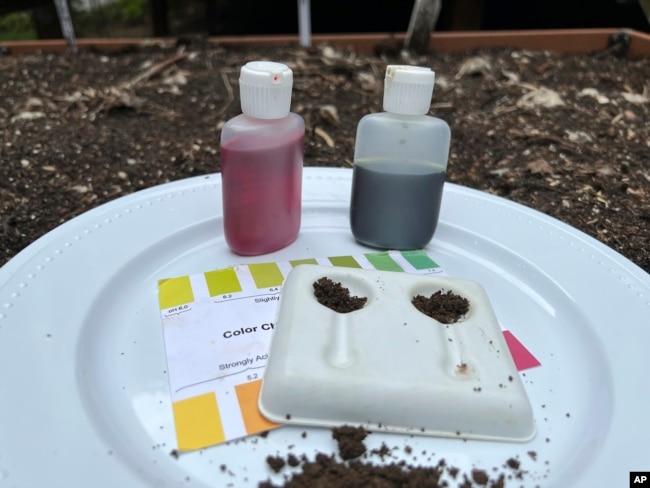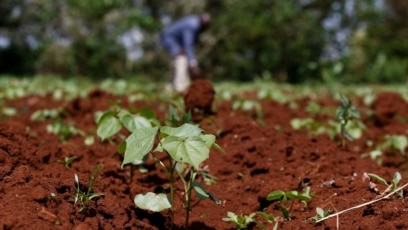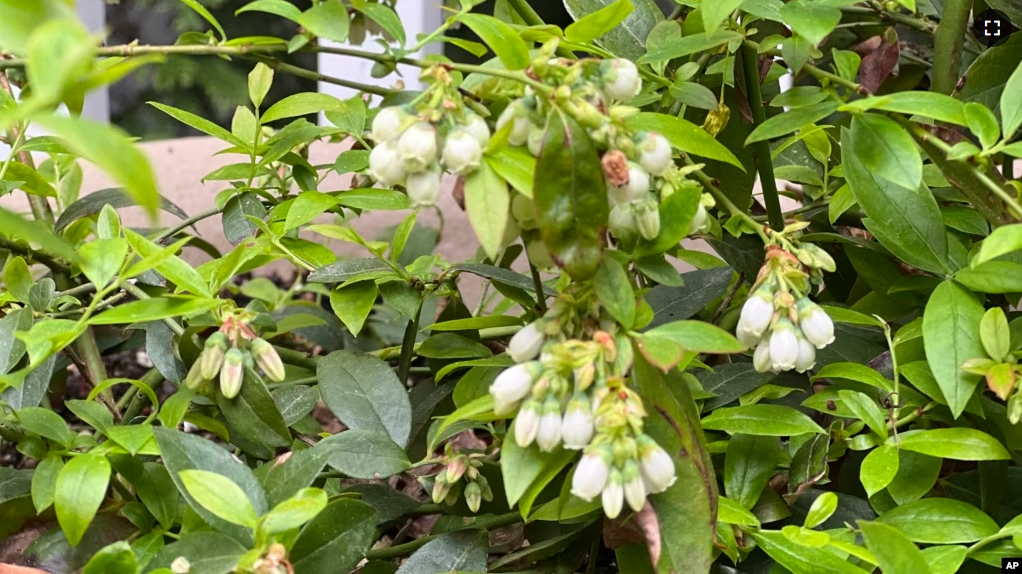Healthy plants are the most important part of a growing garden. And one of the best ways to keep plants healthy is to make sure the soil’s chemical pH level is correct.
Every plant grows best in a specific pH level. The right pH level lets the plant take in the nutrients it needs to stay healthy and grow. Because the preferred levels are different for every plant, gardeners should learn the pH requirements for each one.
For example, carnations require pH levels between 6.7-6.9; many grasses need a pH of 6.3-6.8; tomatoes need 6.2-6.8; azaleas, 4.5-6.0; and blueberries need a pH of between 4.5 and 5.5.
What is pH?
Soil pH is the level of acidity or alkalinity of the soil, as measured on a 14-point number system. A pH of seven is neutral. Values below seven are acidic, and those above are alkaline. Each unit on the number system is 10 times the next value on the scale. So, a pH reading of 7.0 is 10 times higher than a reading of 6.0. That means a small 1-unit difference is a lot.
If the pH does not fit a plant’s needs, it will not be able to take in enough nutrients. That is the case whether the nutrients are found naturally in the soil or added as fertilizer. A lack of nutrients will result in a lack of growth, discoloration, and even death.
The wrong pH can also poison your plants. That is because, just as it can block needed nutrients, the wrong pH can also increase the uptake of other nutrients to the point they become poisonous.

How to test your soil
To learn the pH of your soil, use products like pH testing devices or an electronic meter. They can be found at stores that sell plants, called nurseries, or online.
Kits usually contain a chemical colorant that is put on a small amount of soil. Users wait up to a minute or so, then compare any color changes to examples provided in the kit.
Test strips change color when placed into a mixture of soil and water. And electronic meters provide a reading after they are placed into the soil, sometimes with water.
Depending on where you live, you can also send a small amount of soil to a cooperative extension office, which are services tied to some universities in the U.S. They likely offer soil testing for a small cost. Cooperative extension offices provide agricultural services from experts. In the U.S., they can be found at this link. Many countries have similar services at universities.
General guidelines often ask you to dig up 60 milliliters of soil from three separate areas 10 centimeters deep within the same garden bed. Then mix the soil samples to create an average. It is best to call ahead for directions.
Soil amendments
You do not have to do anything if your soil’s pH falls within your plant’s required levels. However, if the result is outside the required levels, your next step should be to amend the soil. Use the gardening product elemental sulfur to lower pH. Use ground limestone to raise it.
Work the product about 20 to 30 centimeters into the soil before planting. Read the directions that come with the product to know how much to put in.
Tests provided by the cooperative extension office can offer expert guidance. Results from the office will arrive with advice about how much of which amendment needs to be added to meet your plant’s preferred pH levels.
Be sure to test each area or bed in your garden separately. It is not unusual for differences to exist, even within a small area. It is also best to carry out a pH test every two or three years because soil conditions change, and amendments get used up.
I’m Caty Weaver.
Jessica Damiano reported this story for The Associated Press. Gregory Stachel adapted it for VOA Learning English.
Quiz – For Healthy Plants, Test Your Garden’s Soil

Start the Quiz to find out
_________________________________________________________________
Words in This Story
garden – n. an area of ground where plants (such as flowers or vegetables) are grown
specific – adj. special or particular
alkali – n. a substance that has a bitter taste and that forms a salt when mixed with an acid
unit – n. a single thing, person, or group that is a part of something larger
meter –n. a device that measures a quality or property of some substance
kit –n. a small group of tools and supplies that permit work on a project
